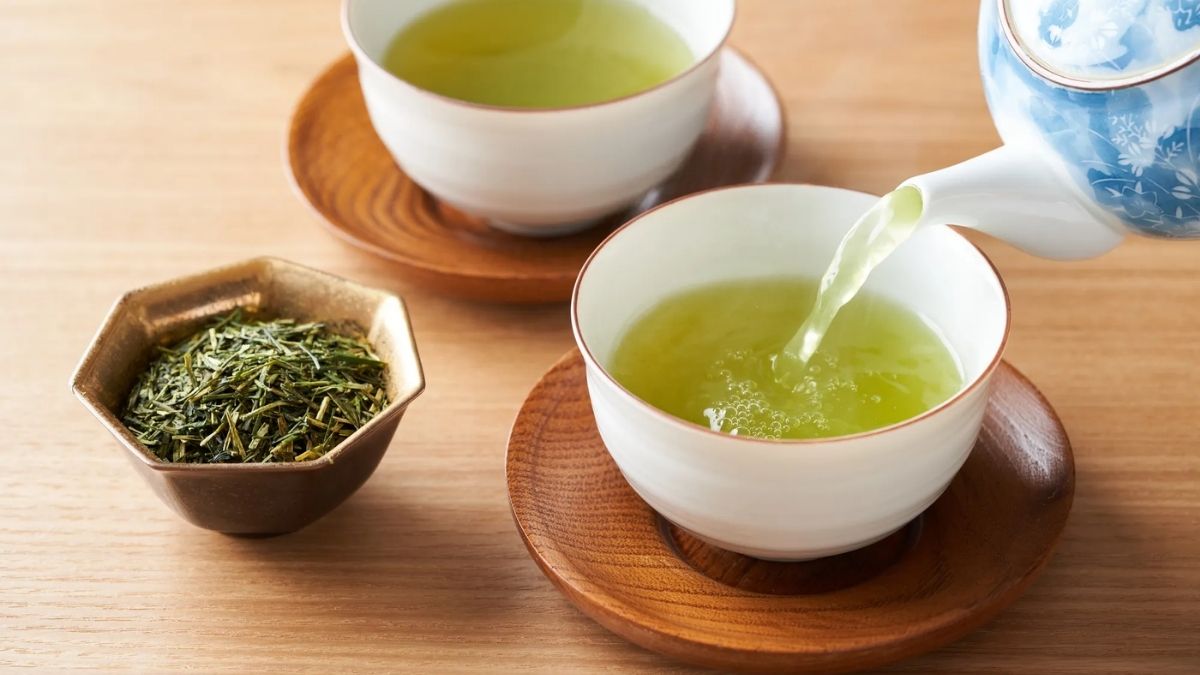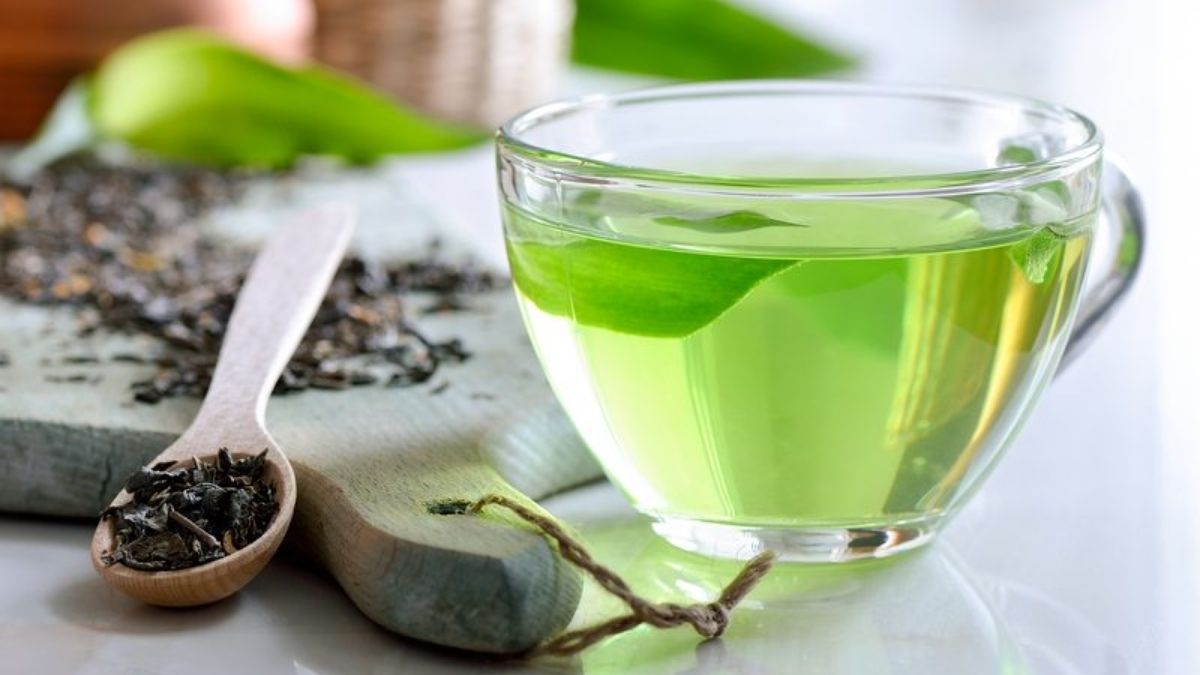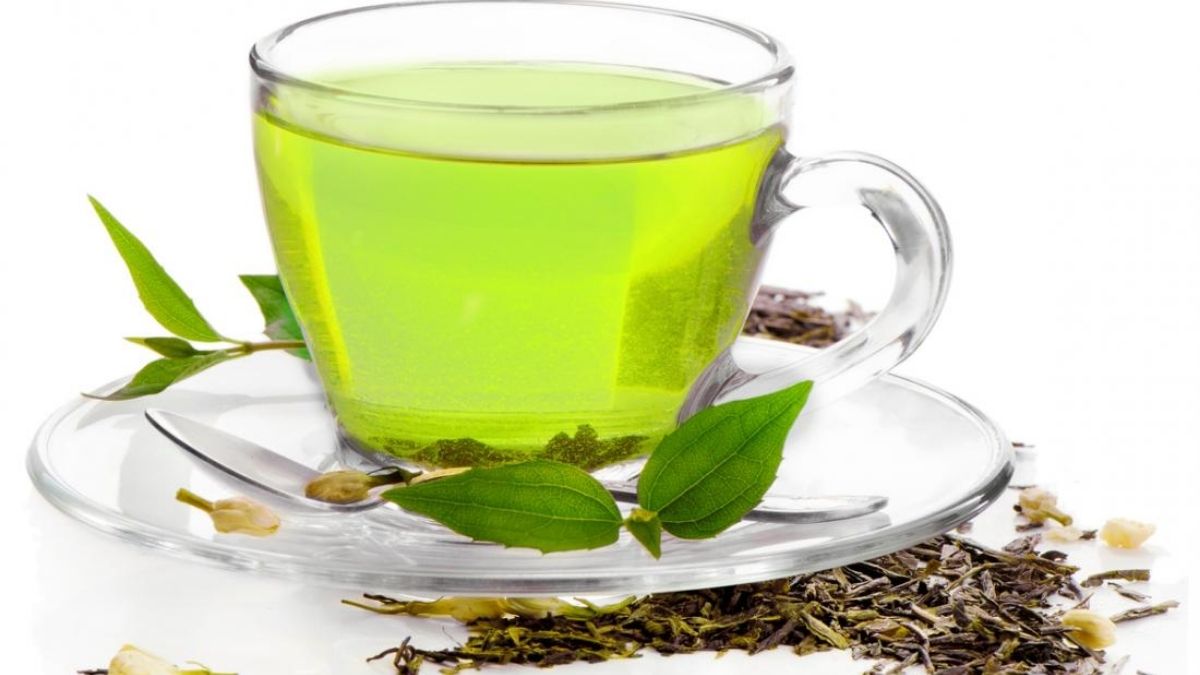Green tea is not nearly as popular in the West as black tea. Green tea is the most popular tea in Japan and portions of China, and it is gaining popularity in the United States. Green teas can have a wide range of flavours depending on where they were grown, how they were processed when picked, etc. Sweet, bittersweet, nutty, vegetal, buttery, floral, marshy, fruity, and oceanic adjectives for good grade green tea. Steamed green teas have a bittersweet flavour (mainly aftertaste), whereas other green teas have a sweet flavour.
Green tea is a “genuine tea” prepared from the tea plant’s leaves. It is grown in China and Japan and is the most popular there. Green tea is gaining popularity worldwide, owing to its possible health advantages. Green tea comes in many varieties, including dragon well, Gunpowder, matcha, and sencha. Green teas have a mild flavour, despite their differences in taste. It’s also found in tea-flavoured foods and drinks like smoothies.
What is Green Tea?
The tea plant leaves make green tea (Camellia sinensis). It’s an evergreen plant that came from China’s southwest woodland region. Green tea, in particular, is made from the Chinese tea plant (Camellia sinensis Sinensis). It grows best at high altitudes with moderate temperatures. It has a sweeter, softer flavour than the other tea plant varietal (Camellia sinensis assamica), typically utilized for black teas. Japan and China dominate green tea production.
All of the tea leaves are picked by hand. Green tea leaves are instantly preserved with heat after harvest, whereas black tea leaves are allowed to oxidize before being dried. Green tea is dried with steam in Japan but dried with dry heat in China using an oven-like drum or work-like device. The tea leaves make up the majority of green tea, and some Japanese use stems, while others blend them with leaves.
Green tea comes in various varieties, each with its processing method. The flavour varies according to the variety, but it’s often softer and sweeter than black tea. Green teas from Japan are known for their strong vegetal flavour, which is grassy and suggestive of seaweed, with citrus overtones. Chinese green teas have a mellow vegetal flavour with sweetness and nutty, flowery, woody, and vanilla undertones.
Types of Green Tea
Green tea comes in various flavours, each with its distinct flavour profile.
- Bi Luo Chun: This sweet, vegetal tea is a Chinese favourite.
- Dragonwell: It’s a Chinese tea with a gentle, sweet chestnut flavour popular in the United States.
- Genmaicha: Japanese tea has a sweet, roasted, vegetal flavour and is made with puffed rice.
- Gunpowder: It’s a Chinese tea made from compressed dried leaves with a mild, grassy flavour.
- Gyokuro: It’s a shade-grown green tea from Japan that flawlessly captures the umami flavour.
- Hōjicha: This roasted Japanese tea of leaves and stems is low in caffeine and has a woody flavour that coffee enthusiasts enjoy.
- Jasmine: The subtle sweetness of jasmine flowers imparts a delicate flavour to green tea, making it a favourite among flavoured tea blends.
- Kukicha: It’s a sweet and vegetal steamed tea produced from Japanese tea stems with very little caffeine.
- Matcha: This sort of Japanese powdered tea has a bittersweet flavour.
- Sencha; It has a vegetal and grassy flavour and is a popular green tea in Japan.
How to Drink Green Tea?
Green tea, unlike black tea, does not require milk, sugar, or other additives, which may lessen the health advantages. Some types of green tea benefit from a squeeze of lemon juice to add taste. Green tea is usually made using water between 150 and 180 degrees Fahrenheit. Brewing times vary depending on the kind, but they are usually brief. Steamed Japanese green teas take only 30 seconds to prepare, whereas others might take up to four minutes. If you steep green tea for too long, it will become bitter.
Always follow the time and temperature recommendations for the individual tea you’re brewing. Green tea should be consumed early in the morning, between 10:00 and 11:00 p.m. To increase nutritional intake and iron absorption, drink a cup of green tea between meals two hours before or after. Green tea should not be consumed with food if you have anemia.
How to Buy and Store?
Green teas are widely available, and they may be found in grocery stores, tea shops, and online. It’s good trying out different brands and varieties to see which you prefer. If you want the best-tasting cup of tea, you should spend more money on high-quality green tea. Tea should be stored carefully to preserve its flavour and extend its shelf life. Heat, humidity, direct light, and anything with a strong odour should all be avoided when storing tea. Green tea should be kept in a well-sealed, opaque container. Drink the tea within a few months of opening the packet.
Benefits of Green Tea
Green tea is regarded as one of the world’s healthiest beverages.
It’s high in antioxidants, which have a variety of health benefits, including:
- enhanced mental performance
- fat loss
- protection from cancer
- reducing the risk of cardiovascular disease
- There could be even more health advantages.
There may be even more potential health benefits.
1. Contains Healthy Bioactive Compounds
Green tea is more than a refreshing drink.
Green tea has a variety of beneficial components that make it into the final beverage. Tea is high in polyphenols, natural substances with health advantages such as inflammation reduction and cancer prevention. Epigallocatechin-3-gallate is a catechin found in green tea (EGCG). Catechins are natural antioxidants that aid in preventing cell damage while also providing additional advantages.
These chemicals can protect cells and molecules by reducing the generation of free radicals in the body. These free radicals contribute to ageing and a variety of ailments. One of the most potent components of green tea is EGCG, and its ability to assist treat various disorders has been researched. It appears to be one of the critical chemicals responsible for the therapeutic benefits of green tea.
2. May improve brain function
Green tea may assist increase brain function in addition to keeping you alert.
Caffeine, a well-known stimulant, is the main active component. It doesn’t have as much caffeine as coffee, but it’s enough to elicit a response without triggering the jittery effects that come with too much caffeine. Caffeine impacts the brain by inhibiting adenosine, an inhibitory neurotransmitter, enhancing neuronal activity and neurotransmitter concentrations such as dopamine and norepinephrine. Caffeine has been demonstrated in numerous studies to increase various areas of brain function, including mood, vigilance, reaction time, and memory.
Green tea, on the other hand, contains more than just caffeine. It also contains L-theanine, an amino acid that can pass the blood-brain barrier. L-theanine stimulates the inhibitory neurotransmitter GABA, which has anti-anxiety properties. It also boosts dopamine and alpha wave generation in the brain.
Caffeine and L-theanine have been shown to have synergistic effects in studies. As a result, combining the two can have very potent impacts on boosting brain function. Green tea may provide a much milder and different type of buzz than coffee due to the L-theanine and modest level of caffeine. Many people report having more steady energy and being considerably more productive when drinking green tea compared to coffee.
3. Increases Fat Burning
If you look at the ingredients list of any fat-burning supplement, green tea is almost always there.
Green tea has increased fat burning and metabolic rate in studies. Green tea extract boosted the number of calories burnt by 4% in one study involving ten healthy men. Green tea extract boosted fat oxidation by 17 percent in another study involving 12 healthy males compared to those who took a placebo.
However, some research on green tea has found no improvement in metabolism, suggesting the effects may vary by individual and study design. Caffeine may also boost physical performance by mobilizing fatty acids from adipose tissue and allowing them to be used as energy. Caffeine has been shown in two separate review studies to boost physical performance by 11–12%.
4. Antioxidants May Lower the Risk of Some Cancers
Uncontrolled cell development is what causes cancer. It is one of the leading causes of death worldwide.
Oxidative damage has been linked to chronic inflammation linked to chronic diseases such as cancer. Antioxidants can aid in preventing oxidative damage, and green tea contains a lot of antioxidants. Green tea components have been associated with a lower risk of cancer in studies such as these:
- Breast cancer is a disease that affects women. According to a meta-analysis of observational studies, women who drank the greenest tea had a 20–30 percent lower risk of breast cancer, one of the most frequent malignancies in women.
- Cancer of the prostate. According to one study, men who drank green tea had a decreased chance of advanced prostate cancer.
- Colorectal cancer is a type of colon cancer. Green tea drinkers were 42 percent less likely to acquire colorectal cancer, according to a review of 29 research.
How do I Make Green Tea?
Many people who believe they don’t like green tea have never had good green tea brewed adequately. Using boiling water to make green tea is a typical mistake. While boiling water to make black tea is generally OK, boiling water to produce green tea can turn even the most excellent leaves into a bitter, disgusting mess. Most green teas are best steeped at 150 to 180 degrees Fahrenheit boiling.
It’s also vital to avoid steeping your green tea for too long, making it bitter and unpalatable. Some teas should only be steeped for 20 or 30 seconds (particularly steamed Japanese green teas), while others (like Jasmine Pearls green tea) can be soaked for up to four minutes.
Can I Add Milk & Sugar to Green Tea?
Green tea should not be served with milk or sugar for two reasons. To begin with, it is rarely as delicious as black tea with milk and sugar. Second, adding milk and sugar negates some of the benefits. If you enjoy green tea with milk and sugar and don’t mind that it’s less healthful than green tea without them, go ahead and add them! In the United States, that style of tea is commonly served with milk, but many individuals prefer it without. A little sugar can help green teas, such as Gunpowder green tea. Sugar is rarely added to white teas, oolong teas, Pu-erh teas, or most green teas.
Conclusion
Green tea should be consumed during the day because it includes caffeine. It’s pleasant to drink before, during, or after a meal, and it may even aid digestion. Consider making green tea a regular part of your life to help you feel better, lose weight, and reduce your risk of chronic diseases.


